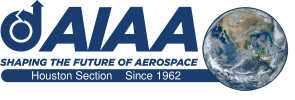Reproducing an Apollo Applications Program Single-Launch Human Venus Flyby Trajectory
by Daniel R. Adamo, Astrodynamics Consultant, AIAA Senior Member, and Distinguished Lecturer
An event of AIAA Houston Section History technical committee Chair: Douglas Yazell; Members: Ted Kenny, Chester Vaughan
and
AIAA Houston Section Astrodynamics technical committee Chair: Dr. Albert Allen Jackson IV; Members: Douglas Yazell, Dr. Tim Crain
As proposed to the Apollo Applications Program by NASA’s Manned Spacecraft Center in 1967, a single Saturn 5 launch of Apollo-derived hardware could send a crew of three on a Venus flyby mission with free return to Earth one year later. Three 30-day Earth departure seasons between 1972 and 1975 were identified. The season-open trajectory for earth departure on 4 April 1972 is developed in detail for this presentation.
- Cost: Free for presentation only. Membership not required.
- Meal option prices (order by Wednesday, Jan. 25, 2017, 2:00 PM): Members $12, Non-members $15
- Meal: Red River BBQ; brisket, spicy links, cole slaw, beans, iced tea. Vegetarian options available.
See event flyer.
RSVP
Advance registration appreciated. Walk-ins welcome.
RSVP below or on the Eventbrite page:




